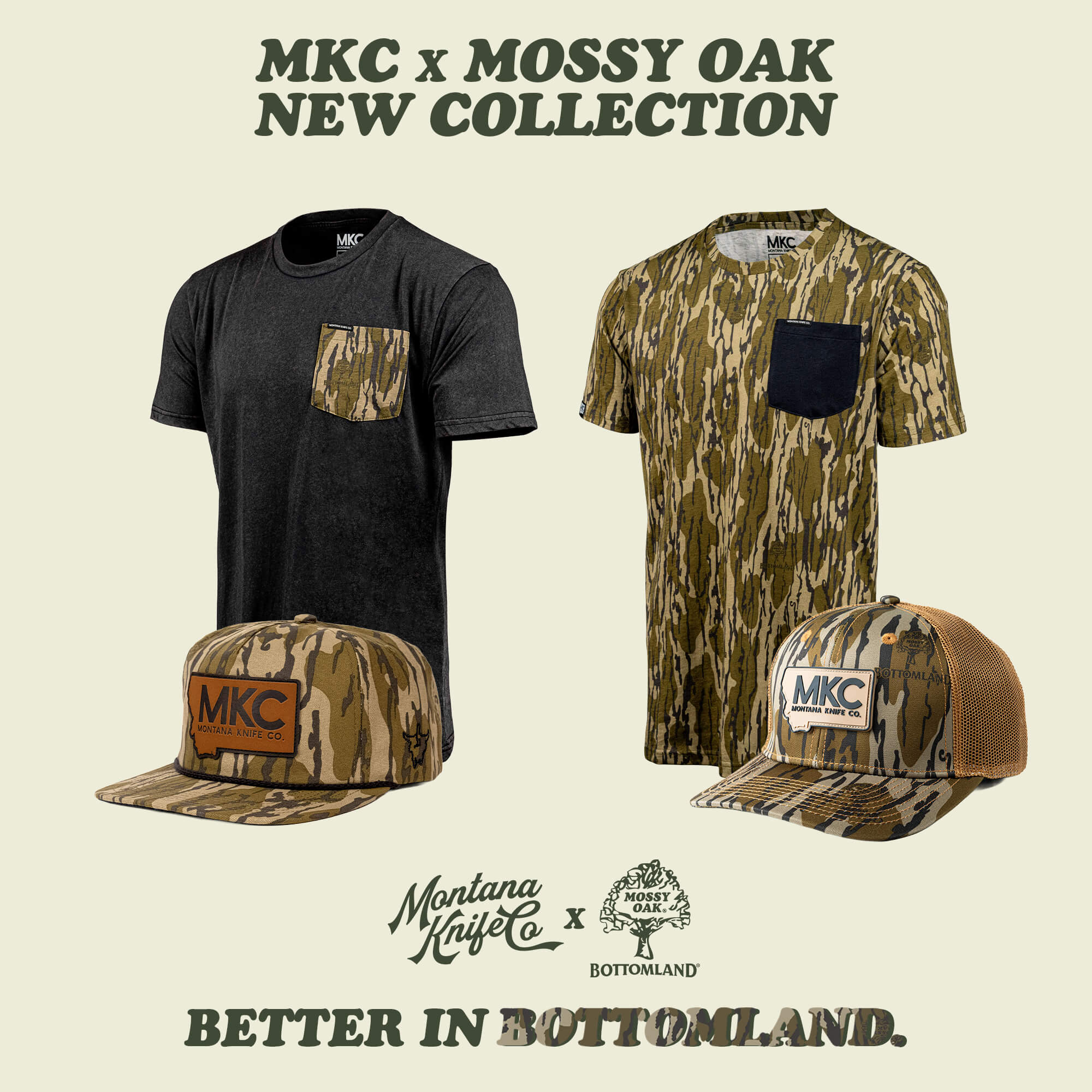Our Buschcraft knife is different than anything MKC has created before.
It’s designed for the weekend adventurer who wants to go out and test his or her survival skills in the wilderness — building shelters, trapping, building fires, etc.
Lots of our buyers watch reality television shows like “Naked and Afraid” and “Alone,” and they asked us to create a wilderness survival knife suitable for similar scenarios. They like the way their hunting knives work, but they want something a little bigger.
That’s one reason we call it a survival knife instead of a bushcraft — you can use it as a hunting knife, but it’s a lot bigger than what I’d personally carry on a hunt, and many customers agree. Plus, our hunting knives weren’t designed with survival in mind. They’re job-specific, designed to cape and skin animals.
While all MKC knives are designed with strong fixed blades that can get you out of sticky situations, that’s not their primary function. Enter: the bushcraft knife and its many uses.

11 Uses for Your Survival and Bushcraft Knife
1. Building Fires
The first thing you’ll want to do in a survival situation is build a fire. Thankfully, survival knives are great for gathering and prepping firewood.
You can use a survival knife to shave bark off a tree, chop dead branches, or take down a small tree. You can also use it to split wood into kindling or shave moss off a tree to get a small fire started.
2. General Cutting
The primary purpose of a knife is to cut, and we don’t want to overlook its main use!
The ideal survival knife should have a blade that can cut rope and any other material you might be working with, whether you’re building a shelter, hacking through brush or vines, or cutting up and cooking the game you trapped for dinner.
3. Prying
A survival knife with a sturdy tip can easily pry something open or apart.
4. Batoning
If you find yourself stuck in wet conditions and the wood you’ve gathered just won’t burn, you can use a survival knife with a baton to split wood.
Position the log on a solid surface like a tree stump and work your blade into one end as if to split it in two. Then, holding a baton or a thinner log in your other hand, pound the spine of the blade down through the log to split it. Repeat to split the log into quarters. This will expose the dry core of the wood so that it burns more easily.
5. Preparing Food
A wilderness survival knife can be used for tasks related to preparing food — dressing game, skinning and fileting fish, cutting fruits and vegetables, etc.

6. Building Shelter
If building a fire is the number one most important action you can take in a wilderness survival situation, preparing food is number two, and building a shelter is number three. But depending on the circumstance — how hungry you are, the weather you’re caught in, etc. — shelter could move up to number two.
For this, you’ll need a survival knife that can chop off tree limbs to make poles, or cut leafy branches for overhead cover. If you have some gear, you can use it to cut rope or drive tent stakes.
7. Self Defense
In extreme survival situations where you’re truly out in the wilderness with no other weapons, a wilderness survival knife will fend off animals and other humans.
I emphasize, especially for women, that you never think physical assault is going to happen to you until it does. As the old adage goes, “It’s better to have something and not need it than to need something and not have it.”
8. Foraging for Food
One survival knife use you might not consider initially is digging. If you’re really desperate for food, you might need to dig up and eat roots from a plant or dig up a ground squirrel.
9. Fishing
You can use a survival knife for cutting lines or cleaning out a fish you need to cook and eat.
10. First Aid
Survival often involves some sort of first aid. You can use a survival knife for basic first-aid tasks, such as cutting bandages and clothing or removing splinters and stingers.
11. Finding Water
On freezing days and nights, you can use a survival knife to chop a hole in ice to access fresh water or fish.

Bushcraft and Survival Knife Uses: Final Thoughts
Inspired by the tests of survival you see on TV? Ready to hone your skills against human error and Mother Nature? Keep the above scenarios in mind while you shop for the perfect wilderness survival knife. The right survival/bushcraft blade just might save your life.
by Josh Smith, Master Bladesmith and Founder of Montana Knife Company







































